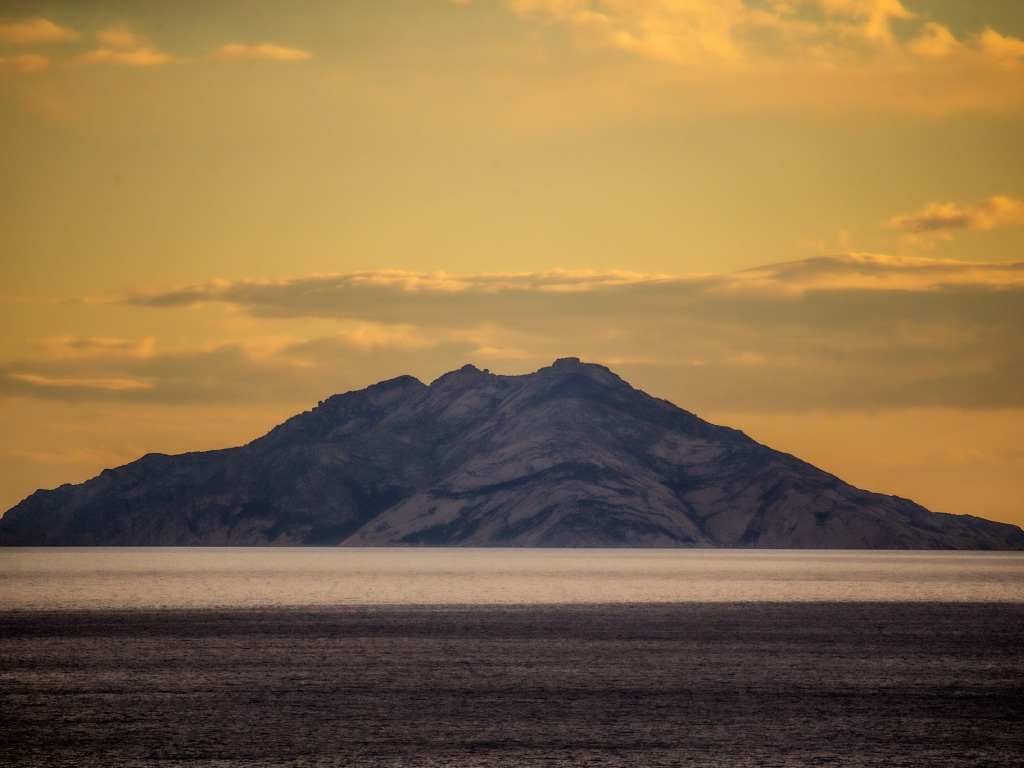Montecristo è l’“isola del tesoro” resa celebre dal romanzo di Dumas Il Conte di Montecristo (1844), ma la sua storia è molto più antica e affascinante. Già in epoca romana era frequentata, e nel V secolo d.C. vi trovò rifugio San Mamiliano, vescovo in fuga dai Vandali, che vi visse da eremita in una grotta di granito con i suoi monaci, accanto a una sorgente ritenuta miracolosa. Nel Medioevo la chiesa e il monastero furono ampliati, forse su un antico tempio romano, quando Montecristo era conosciuta come Mons Jovis. In epoca di Repubbliche Marinare, l’isola ottenne grandi entrate dalla Repubblica di Pisa, che controllava anche la vicina Corsica. A questo periodo risale probabilmente la leggenda del tesoro nascosto sotto l’altare della chiesa di San Mamiliano. Nel 1553, il pirata Dragut devastò gran parte dell’Arcipelago e delle coste tirreniche, deportando anche i monaci e gli abitanti di Montecristo. L’isola rimase disabitata per secoli, fino a che nel XIX secolo si tentò la sua privatizzazione, trasformandola prima in residenza esclusiva, poi in azienda agricola e infine in riserva di caccia. Re Vittorio Emanuele III e la regina Elena vi soggiornavano abitualmente: mentre il re si dedicava alla caccia, la regina praticava la pesca e la famosa “cura dell’acqua del Santo”. Nel 1874 fu affidata all’amministrazione della Colonia Penale Agricola di Pianosa e nel 1878 vi erano 45 detenuti e 5 guardie carcerarie. Nel Novecento divenne riserva reale e solo i custodi vi risiedevano. Dal 1974 è riserva naturale integrale e fa parte del Parco Nazionale dell’Arcipelago Toscano.
Montecristo is the “treasure island” from Dumas’ novel The Count of Montecristo (1844) but its history is ancient and full of characters who have frequented it since Roman times. In the 5th century A.D., Saint Mamiliano lived a hermit’s life on Montecristo to escape Vandal raids. Together with his monks, he lived in a natural granite cave, at an altitude of 300 metres, near a spring that was thought to be miraculous. In medieval times, the church and the monastery were enlarged, possibly on the site of a Roman temple when Montecristo was called Mons Jovis. In the period of the Maritime Republics, Montecristo had important revenues from the Republic of Pisa that also owned nearby Corsica. Perhaps it stems from this period the legend of hidden treasure under the altar in the church of San Mamiliano. In 1553, the pirate Dragout plundered a large part of the Archipelago and the coastline, even deporting the inhabitants and the monks of Montecristo. The island remained uninhabited until the 19th century when there were attempts to privatise it to create an exclusive holiday resort, an agricultural enterprise then a hunting reserve. The King of Italy, Vittorio Emanuele and Queen Elena both enjoyed spending time on the “rock”. In 1874, the Kingdom of Italy entrusted it to the administration of the Agricultural Penal Colony of Pianosa. In 1878, there were 45 inmates and 5 prison guards. In the mid 20th century, the island was a royal reserve where only guardians lived. It became an integral nature reserve in 1974 and later included in the National Park of the Tuscan Archipelago.
Montecristo ist durch den Roman Der Graf von Monte Christo von Alexandre Dumas (1844) bekannt. Ihre Geschichte reicht jedoch weit zurück und ist voller bedeutender Gestalten. Im 5. Jahrhundert n. Chr. zog sich der heilige Mamiliano vor den Vandalen als Einsiedler auf die Insel Montecristo zurück. Gemeinsam mit seinen Mönchen lebte er in einer natürlichen, in den Granit gehauenen Höhle, auf 300 Metern Höhe, nahe einer als wundertätig geltenden Quelle. Im Mittelalter wurden die Kirche und das Kloster erweitert – vermutlich an der Stelle eines ehemaligen römischen Tempels. Zur Zeit der Seerepubliken erzielte Montecristo bedeutende Einnahmen unter der Herrschaft der Republik Pisa, die auch die benachbarte Insel Korsika kontrollierte. Aus dieser Zeit stammt vermutlich auch die Legende vom verborgenen Schatz unter dem Altar der Kirche San Mamiliano. Im Jahr 1553 plünderte der Pirat Dragut weite Teile des toskanischen Archipels und der Küste, verschleppte auch die Mönche und Bewohner Montecristos. Danach blieb die Insel jahrhundertelang unbewohnt. Im 19. Jahrhundert versuchte man sie zu privatisieren: als exklusiver Wohnsitz, landwirtschaftlicher Betrieb und später Jagdrevier. König Viktor Emanuel III. und Königin Elena verbrachten oft Zeit auf der Insel: während der König jagte, fischte die Königin und nutzte das heilende Quellwasser. 1874 wurde die Insel der landwirtschaftlich orientierten Strafkolonie Pianosa unterstellt, wo 1878 45 Strafgefangene und 5 Aufseher lebten. Seit 1974 steht Montecristo unter strengem Naturschutz und gehört heute zum Nationalpark des Toskanischen Archipels.

